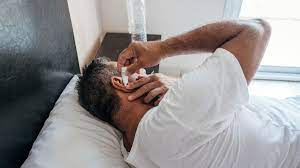6 Stretching Exercises to Help Reduce And Relieve Lower Back Pain
4. Hamstring and Hip Flexor Stretch
There is a strong correlation between LBP and tight hamstrings and hip flexors. Stretching these muscles helps to immediately relief tension in the back and continued stretching over time will help improve the posture in the lower back.
Hamstring Stretch:
How to:
- Lay on back. One leg bent (foot flat on the floor) and other leg lifted straight towards the ceiling. (Use a towel or resistance band to hold leg up if needed)
- Keeping leg straight, pull the leg towards you as much as possible without twisting, until you feel a stretch.
- Keep breath flowing and try to relax.
- You should feel a stretch in the back of the thigh.
- Hold for 15-20 seconds and then repeat with the other leg.
Hip Flexor Stretch:
How to:
- Kneel on ground with one leg forward (foot flat on the ground). Lift tall in the spine and keep the navel pulling in, then tuck the pelvis under (opposite to poking your bottom out).
- You may start to feel a stretch in the front of the hip. Bring weight forward onto front leg if more stretch is required.
5. Roll Backs
Moving the spine using the abdominal muscles as done in this exercise, helps to not only stretch and relieve tension in the back muscles, but also helps to strengthen the core and abdominals. It immediately creates a greater ease of movement in the spine.
How to:
- Sit tall with the legs bent comfortably out in front and feet on the floor. Hands placed on the back of the thighs.
- Breathe out and begin curving the spine starting from the tailbone, rolling backwards until arms are straight and the whole spine is curved in a C-shape.
- You should feel as though the navel is the furthest point pulling backwards.
- Hold there and breathe in.
- Breathe out and bring the body forward, keeping the C-curve, until shoulders are over the hips, then stack the spine up to a straight, tall position.
- Repeat 6-10 times.
Tip: Try to keep the pelvic floor lifted and each vertebra lifted off one another throughout the entire exercise, rather than a sinking feeling into the curve.
6. Kneeling Arm and Leg Reach
This exercise works the entire stabilising muscle system for the torso.
How to:
- Kneel on all fours, ensuring the hands are under the shoulders, the knees are under the hips, and the spine is in neutral.
- Without moving the torso at all, reach one arm forward and the opposite leg back keeping the finger tips and toes on the ground.
- Lift the extended arm and leg off the ground, keeping the navel pulled in to help stabilise the torso.
- Hold for a few second before bringing the hand and leg back down and to the start position.
- If you’ve had to readjust, you will know if you have moved the torso during the exercise.
- Try to correct this with each repetition.
- Repeat 3-5 times each side.
If you find it too difficult to control the torso and spine when lifting the arm and leg, you can omit the lift until you have the strength in the core, or do the entire exercise but with arms and legs separately.
Progression: Plank
As always, it is recommended to consult your doctor or specialist before beginning a new exercise program if you do suffer from LBP. Depending on the cause, some exercises may not be advisory. In some cases, it may also be necessary to be under the supervised guidance of a qualified Pilates instructor.




